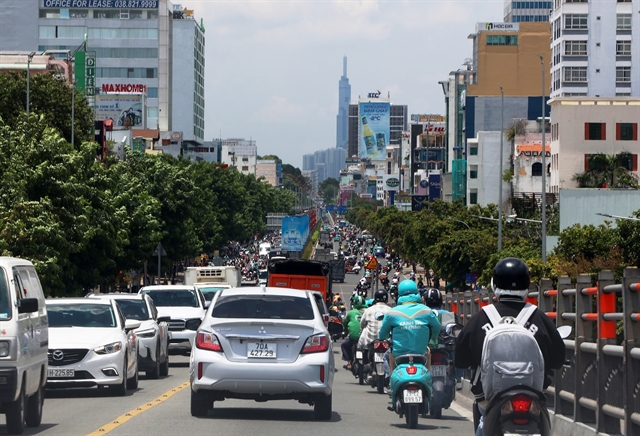 Environment
Environment

 |
| Workers from Hà Nội Drainage One Member Co., Ltd. dredge and remove sludge from the Tô Lịch River. VNA/VNS Photo Hoàng Hiếu |
HÀ NỘI — The Hà Nội People’s Committee has pledged to transform the Tô Lịch River, one of the most heavily polluted waterways in the city, into a clean, green and scenic stream by September 2.
As part of celebrations marking the 80th anniversary of the August Revolution and National Day, the city issued Document 4391/UBND-ĐT on August 1, outlining measures to improve environmental sanitation and upgrade the riverbanks.
The plan includes synchronised projects for wastewater collection and treatment, water replenishment and landscape enhancement. It aims to address pollution at its root while creating green public spaces, improving residents' quality of life and promoting sustainable urban development.
According to Trần Văn Tiến, Deputy Director of the Management Board for Technical Infrastructure and Agricultural Projects, this is a key undertaking of great significance.
“To commemorate this historic milestone, we’ve mobilised maximum manpower, equipment and modern technology. Contractors are working around the clock, dividing the work into multiple fronts to accelerate progress,” he said.
The project involves installing a comprehensive wastewater collection system on both sides of the river to redirect sewage to the Yên Xá Wastewater Treatment Plant. Thus far, 61 out of 63 discharge outlets between Hoàng Quốc Việt Street and Hòa Mục Bridge have been connected.
Efforts to restore embankments, lay grass and remove construction debris are underway, scheduled for completion by August 20.
The remaining two outlets near Quang Bridge will be tackled later due to overlaps with a construction site, but their removal is expected to meet deadlines.
“Once these outlets are handled, untreated wastewater will no longer flow directly into the river,” Tiến noted.
Environmental experts emphasise that fully eliminating pollution in the Tô Lịch River requires a complete sewage collection system to prevent untreated wastewater from entering the waterway.
The Yên Xá plant will play a decisive role in ending this longstanding issue by intercepting sewage before it reaches the river. Additional measures, including introducing clean water flows, will further restore the river’s vitality.
Currently, 96 per cent of the regulating weir system has been completed. The system is critical for water retention, replenishment and backflow prevention.
The Yên Xá plant began trial operations on August 1 after obtaining its environmental permit. With a design capacity of 270,000 cubic metres per day, the plant is operating at 140,000 cubic metres per day, and is expected to reach 180,000 cubic metres per day by August 20.
Head of the Yên Xá Project Management Board Trương Quốc Bảo said this would be a major milestone towards ending decades of chronic pollution. Embankments and access roads on the right bank are being finalised, with contractors directed to finish all work by August 25.
The water channel network, vital for supplying clean water to the Tô Lịch and ensuring steady flow, is about 85 per cent complete.
“We’ve urged contractors to accelerate work and connect the replenishment system by August 20 for synchronised operations,” Bảo said.
Another critical task is building the water-level control route from Hồ Tây A through the Đõ sluice, Thụy Khuê ditch and TE3 canal. Work on the route is being done day and night to start operations before August 25. The pipeline will channel clean water from West Lake to the river at a maximum rate of 2.7 cubic metres per second.
Once all systems are fully operational, the Tô Lịch will maintain stable water levels year-round, reducing the risk of drying out during dry seasons and improving its natural self-cleaning capacity.
For residents like Đặng Văn Dũng of Khương Đình Ward, the transformation is emotional.
“It was heartbreaking to see the river turn into a sewer, carrying 150,000 cubic metres of wastewater every day,” he said. “Now, with the city dredging the riverbed, reinforcing embankments, installing pipelines and planting trees, the Tô Lịch River is coming back to life. We’re truly delighted.”
Beyond infrastructure, the city is also focusing on cleaning the riverbanks, collecting waste, improving embankments and installing lighting, benches and walking paths. These enhancements aim to create an inviting public space, encouraging residents to reconnect with the river. — VNS




